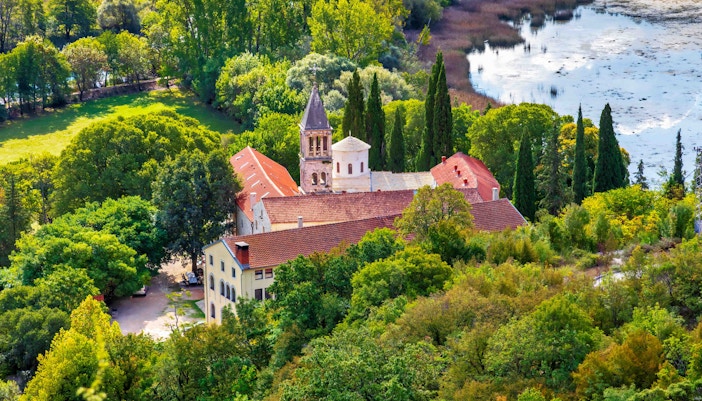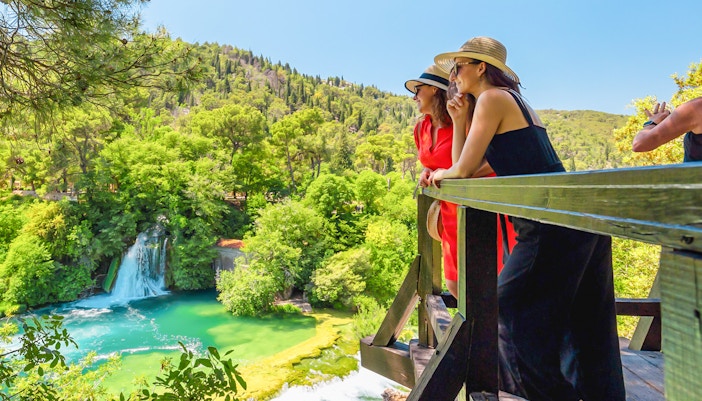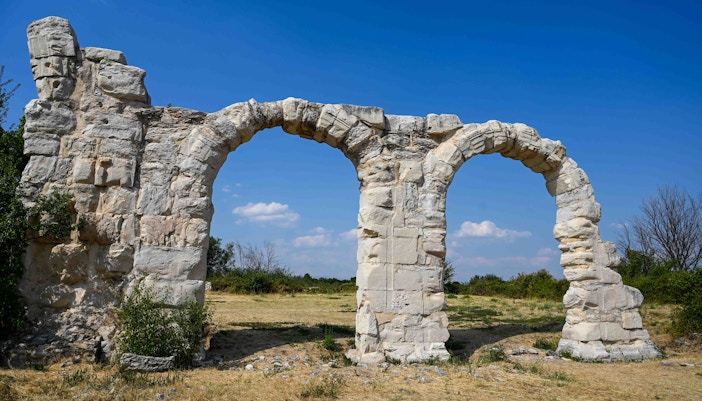The seven waterfalls at Krka National Park are famous for their stunning beauty, turquoise pools, and lush surroundings. Take a boat tour or hike to Skradinski Buk, Roški Slap, Manojlovački Slap, and the other falls for a memorable experience.
What to see & do at Krka National Park


Monasteries
Visit the 15th-century Visovac and Krka monasteries, known for their picturesque settings and historical significance. Not only do they give you a glimpse into the country’s spiritual heritage, but they also offer some of the best views of the park.

Boat tours
Taking a leisurely boat tour on the Krka River is a fantastic way to explore the park. You’ll sail on crystal-clear aquamarine waters, past lush greenery, and see medieval ruins and stunning waterfalls up close.

Lookout points
Hike through the park’s lush forests to visit the observation points for panoramic views of the river, including the ruins of medieval fortresses, preserved watermills, the ethno villages, and other historical sites dotting its riverbanks. Soak in the park’s natural beauty from these vantage points.

Historical sites
Krka National Park offers historical sites like medieval fortresses, ancient watermills, the Burnum Roman military camp, Oziđana pećina cave, and 19th-century hydropower stations, including Europe’s first hydroelectric plant. Explore these to discover the park’s rich history.

Swimming
Take a refreshing swim in the park’s clear, turquoise waters, surrounded by lush greenery and with incredible cascading waterfalls in the background. There’s no better way to cool off on a hot Croatian summer day.





